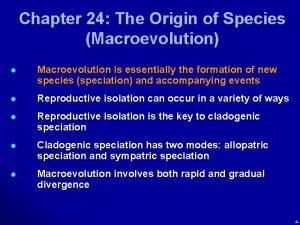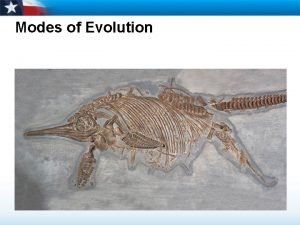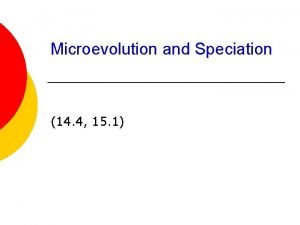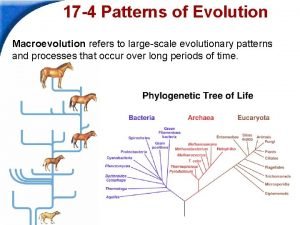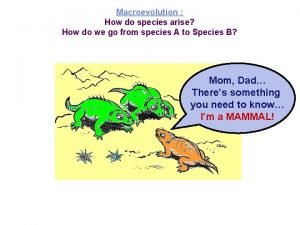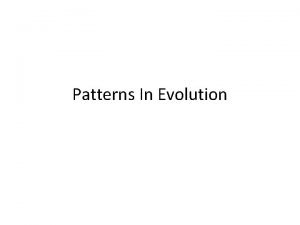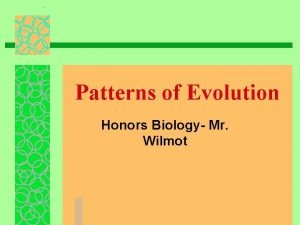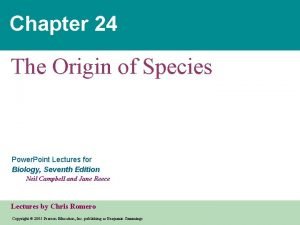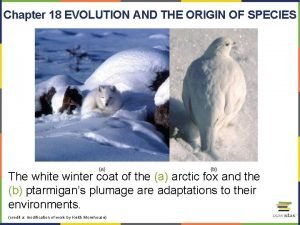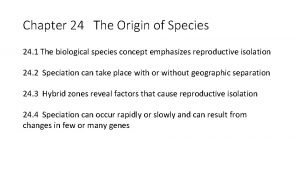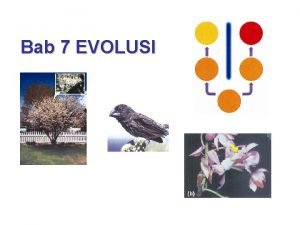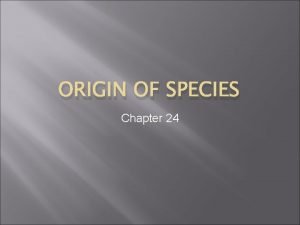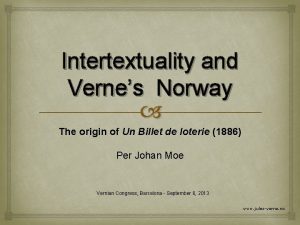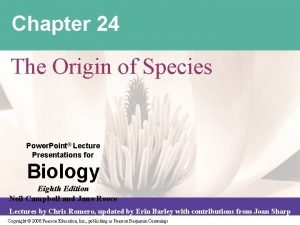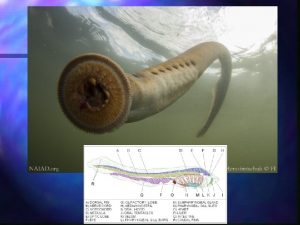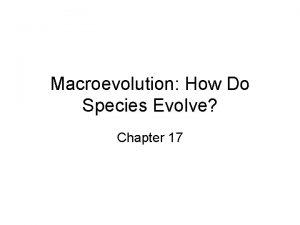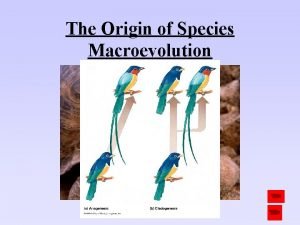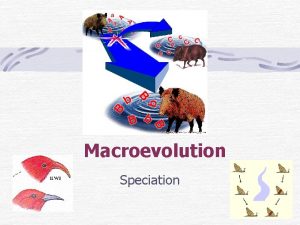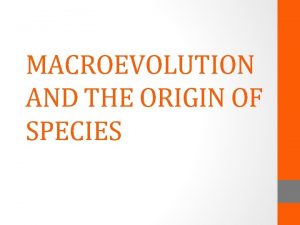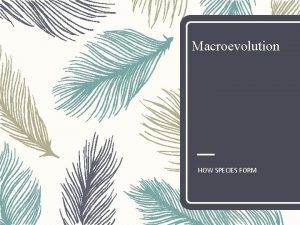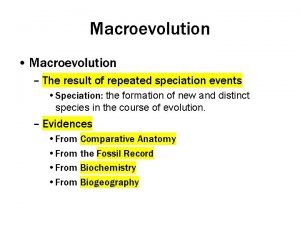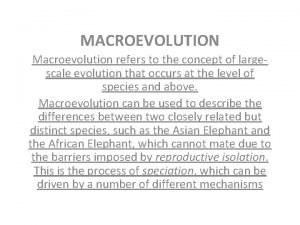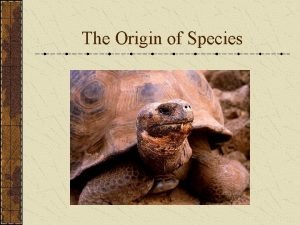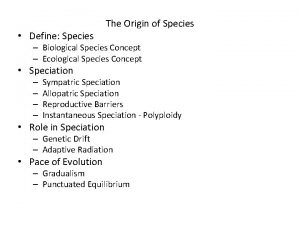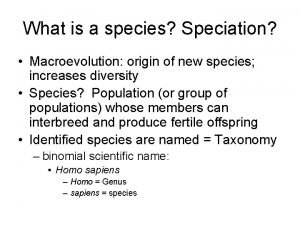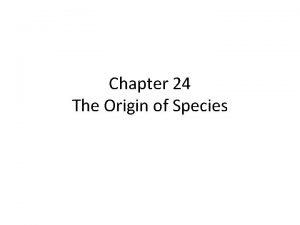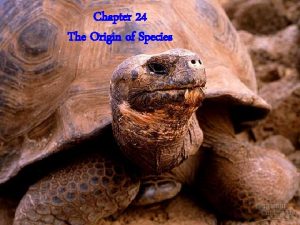The Origin of Species Macroevolution is the origin

















- Slides: 17

The Origin of Species

Macroevolution is the origin of new taxonomic groups, as opposed to microevolution, which is genetic variation between generations within a species. - A species is a population or group of populations whose members have the potential to interbreed with one another and produce viable offspring, but who cannot produce viable offspring with other species.

The biological species concept is based on interfertility, rather than physical similarity.

Speciation - process by which a new species originates. - Involves the creation of a population of organisms that are novel enough to be classified in their own group. - Two processes by which this can occur: - Anagenesis is the accumulation of heritable traits in a population, that transforms that population into a new species. - Cladogenesis is branching evolution, in which a new species arises as a branch of from the evolutionary tree. The original species still exists. This process is the source of biological diversity.


- For a new species to form, there needs to be isolation of some members of a species as a separate population. - Forms of isolation, that interfere with breeding include both… 2. Prezygotic and postzygotic barriers Prezygotic barriers prevent mating or egg fertilization if members of different species try to mate. Examples: a. Habitat isolation - Two species that live in the same area, but occupy different habitats rarely encounter each other. b. Behavioral isolation - Signals that attract mates are often unique to a species. (e. g. , different species of fireflies flash different patterns)

Courtship ritual as a behavioral barrier between species.

c. Temporal isolation - Two species breed at different times of the day or during different seasons. d. Mechanical isolation - Closely related species attempt to mate, but are anatomically incompatable. (Example: flowering plants with pollination barriers; some plants are specific with respect to the insect pollinator, often occurs with butterflies/moths) e. Gametic isolation - Gametes must recognize each other. (Example: fertilization of fish eggs, chemical signals between sperm and egg allows sperm to “recognize” the correct egg)

- Postzygotic barriers a. Reduced hybrid viability - Abort development of hybrid at some embryonic stage. b. Reduced hybrid fertility - Meiosis doesn’t produce fertile gametes in vigorous hybrids. donkey + horse = mule (sterile hybrid) c. Hybrid breakdown - First-generation hybrids are fertile, but they cannot produce fertile offspring in the next generation (e. g. different species of cotton).

B. Modes of speciation 1. Allopatric speciation - Allopatric speciation describes speciation that takes place in populations with geographically separate ranges. Gene flow is interrupted and new species evolve. 2. Sympatric speciation - Sympatric speciation describes speciation that takes place in geographically overlapping populations. Chromosomal changes and nonrandom mating reduce gene flow. Remember: Species arise when individuals in a population become isolated one from the other.


Examples of Allopatric speciation: Allopatric speciation of squirrels in the Grand Canyon. Animals like birds do not show speciation like those animals that are barred from breeding by the canyon.


-Animals diverge mostly due to reproductive isolation. -Reproductive isolation is a result of genetic factors that cause offspring to rely upon resources not used by previous generations. (Example: switch to a new food source) -Example: Lake Victoria has 200 closely related species of Cichlids (fish) which probably all arose from one ancestor with the driving force for speciation being: Competition for a limited resource (food) within the lake, and adaptation to new food sources. This gave rise to different species that are kept from breeding with each other by distinctive coloration pattern.


C. From speciation to macroevolution How then do we get from the mechanism of speciation to evolution on a grand scale; i. e. , macroevolution? Two models: -The Gradualism model suggests that change is gradual with the accumulation of unique morphological adaptation. - The Punctuated Equilibrium model suggests that rapid change occurs, with a new species “erupting” from the ancestral lineage and then staying the same thereafter.

 Cladogenic
Cladogenic Macroevolution definition
Macroevolution definition New concept chapter 19
New concept chapter 19 Genetic drift vs gene flow vs natural selection
Genetic drift vs gene flow vs natural selection Section 17-4 patterns of evolution answer key
Section 17-4 patterns of evolution answer key Types of speciation
Types of speciation Macroevolution
Macroevolution Macroevolution 7 patterns
Macroevolution 7 patterns Can plants be keystone species
Can plants be keystone species Origin of species by charles darwin
Origin of species by charles darwin Chapter 24 the origin of species
Chapter 24 the origin of species Gradual speciation
Gradual speciation The origin of species ch 24
The origin of species ch 24 The origin of species manga 24
The origin of species manga 24 Alopatri
Alopatri Chapter 24 the origin of species
Chapter 24 the origin of species The origin of species bl
The origin of species bl Habitat isolation
Habitat isolation
